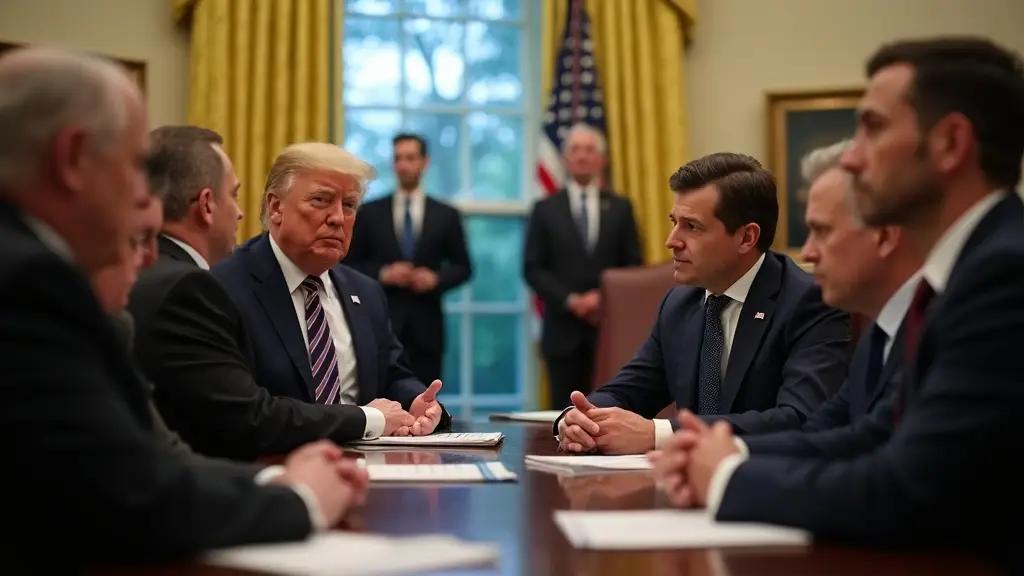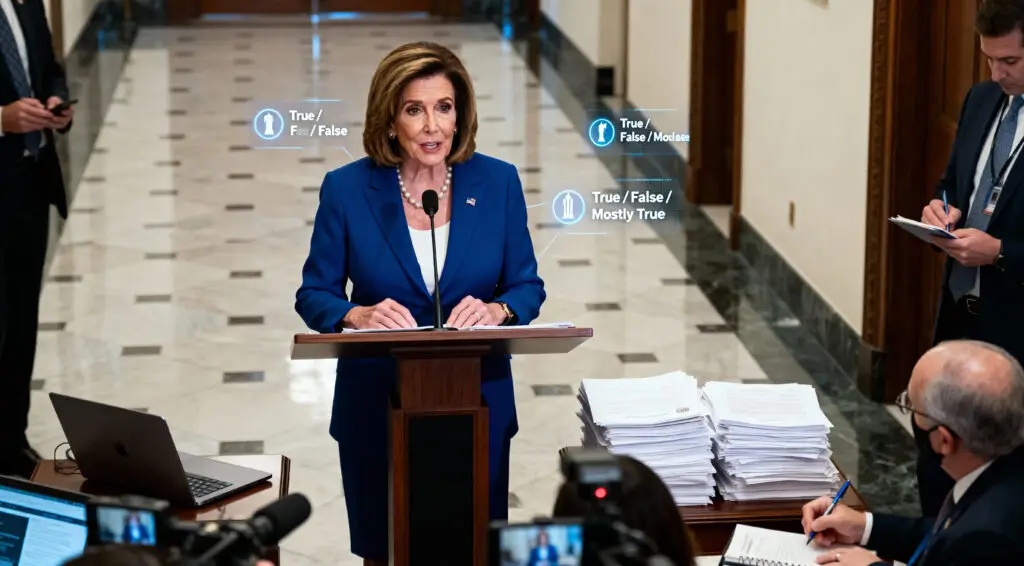White House Meeting Resets the Tone
President Donald Trump met for about an hour at the White House with Ukrainian President Volodymyr Zelenskyy in a renewed push to chart a path towards ending Russia’s war in Ukraine. The encounter, notably warmer than their tense Oval Office meeting in February, featured a visible show of goodwill as the two leaders exchanged smiles and a firm handshake. Coming on the heels of Trump’s summit in Alaska with Russian President Vladimir Putin, the session signalling a deliberate effort to test whether diplomatic momentum could be built quickly and translated into a workable framework for peace.
Trump has cast the war’s continuation as a global risk, warning that prolonged conflict could escalate dangerously. The shift in tone with Zelenskyy was therefore more than optics; it offered a chance to restart dialogue on terms that both sides might live with while keeping European allies closely involved. Zelenskyy later described the conversation as “maybe the best one,” suggesting the leaders found at least some areas of convergence.
European Leaders Join to Accelerate Progress
Several European leaders joined the Washington talks, underscoring how deeply the continent is invested in an outcome that stabilises security and energy markets. Their presence also conveyed a clear message: Any durable settlement will require coordination with partners who have shared both the economic and humanitarian burdens of the war. By converging in the White House alongside U.S. principals, European participants sought to reinforce unity and reduce room for miscalculation as negotiations advanced.
European capitals remain acutely aware of the conflict’s toll. Refugee flows, disrupted trade routes, and defence posture adjustments have all been costly. Their involvement in Washington reflects a pragmatic assessment that progress, even incremental, is better achieved in a broad, coordinated setting than through siloed diplomacy.
Sticking Points Remain on Territory and Security
The most intractable issues are unchanged. Putin has insisted that Russia retain roughly 20% of Ukrainian territory it currently controls. Zelenskyy, constrained by Ukraine’s constitution and public sentiment, rejects ceding land as the price of peace. Those positions define the core dilemma facing negotiators: how to reconcile territorial integrity with a cessation of hostilities that both publics can accept.
Security guarantees form the second pillar of the talks. Any agreement will hinge on the credibility of commitments that ensure Ukraine cannot be overrun again and that Russia has incentives to maintain the peace. The White House session surfaced ideas, but officials signalling that bridging the gap between legal guarantees and political realities will require sustained work.
Read More: Putin Gets Warm Welcome from Trump at Alaska Summit
U.S. Role and the Question of Enforcement
Asked whether U.S. forces might help secure a potential agreement, Trump did not rule out a role for American troops. Such a move would represent a significant evolution of U.S. involvement, shifting from support and assistance towards a more direct security footprint tied to enforcement. Even a limited presence, whether as monitors, trainers, or part of a multinational mission would raise complex questions about mandate, duration, and risk.
For proponents, an enforceable framework could anchor investor confidence and reconstruction planning. For sceptics, it risks entanglement without guarantees of compliance from Moscow. The administration’s next steps will likely balance those considerations while gauging congressional support and allied appetite for any boots-on-the-ground component.
Path Towards a Potential Trilateral Summit
Trump indicated he would call Putin after wrapping up talks with Zelenskyy and, depending on progress, seek to convene a three-way meeting with himself, Putin, and Zelenskyy a trilateral summit that has not occurred since the war began. Bringing the principals into the same room could clarify red lines and test the political space for compromise. It could also expose how rigid those lines remain.
Success would depend on careful sequencing: confidence-building measures, clarity on territorial status during negotiations, and interim security arrangements to reduce the chance of battlefield surprises. Without those guardrails, a high-profile summit risks becoming a venue for public posturing rather than a catalyst for deal-making.
Optics and Messaging Around Leadership
Observers noted that Zelenskyy arrived in a dark, formal outfit, a departure from his usual wartime attire. Trump remarked favourably on the change, which some interpreted as a gesture towards formal diplomacy and an appeal to international audiences wary of continued fighting. Optics matter in negotiations; they signal intent, create space for flexible rhetoric, and help leaders manage domestic perceptions as they weigh concessions and trade-offs.
The contrast with February’s strained meeting was stark. This time, both leaders appeared to prioritise a tone that enables working-level teams to explore options rather than relitigate grievances. That tonal reset does not resolve policy differences, but it can lower the temperature and make room for pragmatic discussion.
Texas Democrats Return and Redistricting Politics Heat Up
U.S. domestic politics are tense as Democratic lawmakers in Texas return to the state after redistricting battles, accelerating Republican-led mapmaking efforts. This could impact federal policy and House control. Redistricting outcomes could shift committee leadership and legislative priorities, including funding for security assistance, refugee resettlement, and reconstruction support related to Ukraine. The partisan balance emerging from Texas may shape Washington’s bandwidth for international initiatives while White House diplomacy intensifies.
The developments reflect the two tracks of American politics in 2025: an urgent bid to resolve a major war and a domestic contest over representation rules. The White House’s diplomatic opening with Zelenskyy’s Russia will depend on patient, coordinated work and the U.S. political system’s alignment to sustain it.























